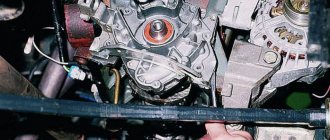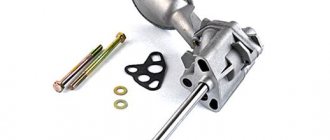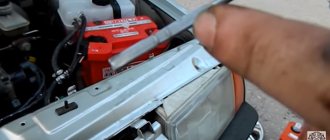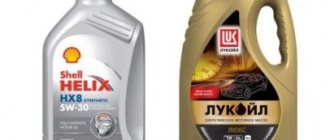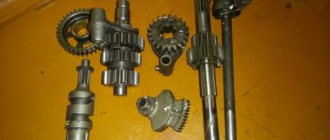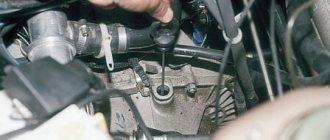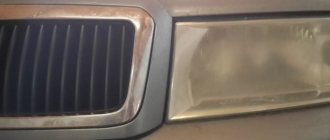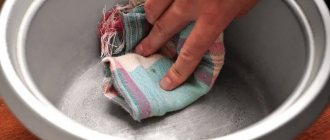–
CONDITION 1
ROOM ÑÑ Ñеми же ÑпоÑобами и пÑиемами, коÑоÑÑе Ð ¸Ð·Ð»Ð¾Ð¶ÐµÐ½Ñ Ð´Ð»Ñ Ð¾Ñевого дÑмоÑоÑа. â
ROOM ÑÑ Ñеми же ÑпоÑобами и пÑиемами, коÑоÑÑе Ð ¿ÑименÑÑÑ Ð¿¿Ñи ÑемонÑе оÑевого дѼоÑоÑа. â
RESULTS ¸Ðµ клапанов и пÑÑжин. RESULTS RESULTS. â
RESEARCH Ñивода. â
RESEARCH го пивода â
RESEARCH го пÑивада â
RESEARCH го пивода â
RESULTS RESEARCH RESEARCH ´Ñ зÑбÑаÑÑми колеÑами и коÑпÑÑом, зазоÑов Ð²Ñ SMALLERY ROOM ROOM ROOM ¾Ð¹ пÑÑжинÑ. OPTIONAL RESEARCH RESULTS ¾Ð²Ð°; RESEARCH RESEARCH â
| RESULTS. â |
4 points 4 points 4 points аÑоÑом. RESULTS µÑедаÑÑ, Ð²ÐµÐ´Ð¾Ð¼Ð°Ñ ÑеÑÑеÑÐ½Ñ ÐºÐ¾ÑоÑой 8 пока RESULTS. RESULTS ¾Ð±ÑÑнÑми Ñп¾Ñобами, ÑоблÑÐ´Ð°Ñ ÑÑÐµÐ±Ð¾Ð²Ð°Ð½Ð¸Ñ , , , , , , , , , , , , , , , , , , , ов. RESULTS ROOM ¿Ð»Ð¾ÑноÑÑей ка ROOM RESULTS, ASSESSMENT »Ð¾Ð²Ð»ÐµÐ½Ð¾ его назнаÑением. â
Replacing the oil pump using the example of a Chinese saw Partner
The oil pump is a fairly reliable element of the chainsaw. However, during operation, malfunctions may occur, the elimination of which requires its replacement. For example, to dismantle the oil pump on a “Partner” chainsaw, you must perform the following steps:
- Unscrew the bolts securing the crankcase cover;
- Remove the cover;
- Move the saw chain to the side and remove the bar;
- Remove the saw chain;
- Remove the air filter housing and the filter itself;
- Remove the spark plug;
- Unscrew the starter cover and remove it. This is necessary so that during the process of cranking the engine crankshaft, the ratchet teeth do not deform and the starter does not break;
- While turning the flywheel, set the piston at top dead center (directly below the spark plug hole) and insert a pre-prepared fabric harness into it. This will help fix the piston in one position and protect the walls of the combustion chamber from mechanical damage;
- Using a puller, unscrew the clutch retaining clip. Unscrewing must be done clockwise. To do this, some models have a stamping with an index arrow and the inscription “Off”;
- Remove the friction element, drum and clutch bearing;
- Remove any remaining dirt formed during work;
- Using a screwdriver, move the cover lock to the side and remove it;
- Unscrew the screws securing the pump;
- Carefully, using a screwdriver, pry the pump housing up and lift it to the side and remove it from the mounting socket. After this, it is necessary to turn off the supply and suction lines.
Installation of a new pump is carried out in the reverse order.
We also recommend watching the video instructions, the author of which explains in detail and shows how to replace the oil pump on a Partner chainsaw.
How does an oil pump work?
The oil supply pump is located on the crankcase, on the same side as the drive - directly behind the drive sprocket. To understand how it works, you need to look at the pictures and see what parts it consists of and what moves where.
So, this is what the oil pump looks like (it may look different for different models, but the principle is the same).
And here is his working diagram.
It all works like this.
From the drive, through a worm gear, rotation is transmitted to the plunger, which, while rotating, makes a longitudinal reciprocating movement. This back and forth movement is ensured by the shape of the plunger, an adjusting screw with an eccentric and a thrust spring. When the plunger moves back, oil is sucked into the oil chamber through the inlet due to the vacuum created (similar to a syringe). When moving forward, oil is pushed out through the outlet of the oil chamber. To ensure tightness, a rubber cuff is used (it is not shown in the diagram).
To prevent both holes from being open at the same time, there is a segment cutout at the end of the plunger. When moving backwards, it is turned towards the inlet, while the outlet is closed. When moving forward, the inlet closes and the outlet opens, as the segment cutout rotates towards the outlet. Thus, for one revolution the plunger makes one reciprocating movement.
To reduce or increase the stroke of the plunger, an adjusting screw with an eccentric is used. The eccentric in this case is a cylinder built into the body of the adjusting screw. Moreover, the central axis of this cylinder does not coincide with the axis of rotation of the screw, therefore, if the screw is rotated, the cylinder either approaches the end of the plunger or moves away from it. Actually, this is the essence of the eccentric. Because of this offset from the center, it is often called a cam.
Removal
Rice. 71. Oil pump drive
Drain the oil from the crankcase. Remove the crankcase or its front part, remove the front and rear oil receivers, disconnect the drive clutch 6 (Fig. 71), remove the rings 8 and locking pins 7, slide the clutch along the drive shaft 3; loosen the washers and unscrew the bolts securing the pump to the block.
Rice. 68. Oil pump
Lower the pump so that the locating pins 12 (Fig. 68) come out of the holes in the block. Sliding the pump back, remove the drive shaft with gear. Remove the oil pump along with the central oil receiver.
Malfunctions, causes and solutions
We have already noted at the beginning what malfunctions there are - either the oil is not supplied, or it is leaking where it is not needed. How to fix it?
Oil is not supplied
The lack of oil supply, if it does not leak anywhere, is due to the lack of stroke of the plunger. This may be due to incorrect installation of the adjusting screw, or due to wear of the plunger itself.
The adjusting screw may not be positioned correctly if you or someone else previously disassembled the oil pump and reassembled it incorrectly. In this case, the +/- marks are correct, but the screw is set to the opposite position. In this case, we disassemble the pump and install the screw correctly. Or simply turn the screw to a position closer to “-“. The screw itself, as a rule, does not spontaneously move into a position that blocks the stroke of the plunger.
The wear of the plunger consists in the fact that the edge of its end has been ground down so much that it no longer has a protruding part, but instead the entire edge is in the same plane. In this case, if you do not want to buy spare parts, you can grind off the edge of the end of the plunger, giving it its original shape. At the same time, you must not forget to sharpen the central protrusion. After such turning, the volume of the oil chamber will increase slightly, since the plunger will move back slightly. But it will download nonetheless.
If the pump does not pump, but oil flows from the chainsaw body, then most likely one of the hoses has been disconnected - either the input or output. If it is input, then oil will flow even when the saw is not running. If it’s a day off, it will only flow when the chainsaw is running. It is clear that to fix this problem you just need to put the hoses back on.
Oil leaking
We discussed one of the reasons for leaks a little higher, although it is not related to a malfunction of the oil pump itself. But it happens that the chainsaw works, and even oil is supplied, but at the same time oil also flows from the housing.
This happens if oil leaks through the rubber seal. It may be worn out, or it may have been installed incorrectly by someone before.
If during disassembly it turns out that the cuff is positioned incorrectly - with the collar from the oil chamber - then simply turn it 180 degrees. If it is worn out, then it needs to be replaced with a new one. If you can't find a new seal that fits, you can try installing a matching O-ring from a plumbing store. But doing this so that everything works perfectly later can be quite difficult.
What does an oil pump consist of and how does it work?
The pump housing is located on the outside of the saw housing, under the centrifugal clutch drum of the gasoline saw. The drive mechanism of the oil pump is rigidly connected to the saw chain clutch. This means that the higher the engine speed, the more lubricant is supplied to the chain and chainsaw bar.
Unlike the plungers used on car pumps, the operating mechanism in chainsaws can be disassembled and reassembled without much effort. The pump body has two calibrated holes located opposite.
One hole is connected to the oil tank and serves to draw lubricant from the tank. The other communicates with the main line leading to the saw set. At the end of the plunger there is a longitudinal segmental groove to capture the working fluid.
Oil is supplied by rotating the plunger around its axis. The segment cut first opens the hole connecting the pump to the oil tank. At the same time, a vacuum is created in the pump chamber and a portion of oil is drawn into it.
Further rotation of the plunger closes this channel and creates excess pressure in the system. Passing the segment cutout through the discharge hole opens it, and the working fluid is supplied to the line to lubricate the chain.
1.15. Removing, checking the condition and installing the oil pump
REMOVAL
| EXECUTION ORDER | |
| 5. Remove the mounting screws and remove the cover from the pump. |
| In order not to tear off the slots in the heads of the mounting screws, it is better to loosen them using an impact screwdriver. |
EXAMINATION
| EXECUTION ORDER | |
2. Unscrew the pressure reducing valve plug and remove the valve spring and plunger from the socket in the pump body. Check the spring for deformation and the plunger for scratches and burrs. Defective components must be replaced. 3. Install the gears into the pump housing and fill the cavities between their teeth with petroleum jelly (as an initial fill for initial startup). 4. Lubricate the pump cover screws with anti-seize sealant. Install the cover, install the screws and tighten them to the required torque. Install the spring and pressure reducing valve plunger into the pump housing. After replacing the sealing washer, screw in the plug and tighten it securely.
INSTALLATION
| EXECUTION ORDER | ||
|
How to adjust the oil supply to a chainsaw chain?
Adjusting the oil supply level is necessary when operating the tool under difficult conditions. The supply level is controlled by a shaft with an eccentric mounted on it, which rests on the pump plunger.
Rotation of such a shaft displaces the plunger relative to the longitudinal axis. This allows you to increase or decrease the volume of the pump’s discharge chamber and quite accurately adjust the level of supply of the working fluid. To do this, at its lower end there is a groove with which adjustment is made.
As a rule, the screw is accessible from the bottom of the chainsaw. For example, in order to adjust the oil supply to the saw set of chainsaws of the Ural family, you must perform the following steps:
- At the bottom of the saw, next to the bar, find the adjusting screw. It is located next to the stamping, which shows the direction of its rotation;
- Use a screwdriver to turn the shaft in the direction of increasing or decreasing the oil supply level.
When performing these actions, remember that the shaft is designed to rotate up to 90⁰. Exerting too much force will lead to breakage of the screw retainers and possible interruption of oil supply to the friction surfaces.
Video instructions can be viewed by following the link
Replacing the oil pump
To replace the VAZ 2106/07 oil pump, the car should be placed on a lift, inspection hole or overpass. In extreme cases, you can use a jack.
Necessary tools and equipment
To replace the oil pump you will need:
- set of socket wrenches;
- knife;
- jack;
- durable wooden block;
- wooden spacer;
- container for draining oil;
- new oil pump gasket;
- new pan gasket;
- new oil pump.
Types of plunger pumps
Plunger pumps installed on modern chainsaws are:
- Adjustable;
- Unregulated.
Unregulated pumps are usually installed on household-grade tools, for example Yamamoto CS-4552, Husqvarna 135 Mark II, Kruger GCSK 35-45, Husqvarna 120 Mark II. Such units provide a stable supply of working fluid regardless of operating conditions. They have a simple but reliable design. Their disadvantages include the lack of adjustment of the supply of lubricant to the friction surfaces.
Adjustable pumps are installed on chainsaws of semi-professional and professional classes, such as powerful chainsaws from Energomash, American McCulloch, Procraft, Parma. They have a more complex design.
The adjustment function is necessary when the saw is operating under difficult operating conditions, when the amount of working fluid specified by the manufacturer is not enough to properly lubricate the saw set. In addition, it may be needed when the plunger is slightly worn, when the pump cannot provide enough oil to lubricate the bar and chain.
The photo shows 3 types of adjustable oil pumps
Design Features
After modernizing the 21114 engine taken as a standard, the 11183 engine has the following design nuances:
- “high” cylinder block – height increased by 2.3 mm compared to 2110;
- fasteners - the holes are threaded with M12 standard pitch;
- crankshaft – original, steel, forged, crank radius increased by 2.3 mm;
- cylinder head gasket – thickness 1.2 mm, regular;
- combustion chamber – increased to 26 cm3 due to two-stage milling;
- catcollector - short tubes, round block shape.
cylinder head 11183
To reduce manufacturing costs, a connecting rod-piston group, a pulley and a crankshaft flywheel from the 2110 engine are installed in the engine. The volumes of the combustion chambers are increased for the engine with the sole purpose of ensuring a compression ratio of 9.6 - 10.0.
The manufacturer does not provide hydraulic compensators in this internal combustion engine, therefore, on the one hand, the use of lower quality oil is allowed. On the other hand, the savings in the operating budget when using cheap lubricants are “eaten up” by the costs of periodically adjusting the valves in a service station, since the manufacturer recommends doing it more often.
Alternator belt drive
Even without improving the performance, the engine is high-torque and torquey, and produces 200% of the service life declared by the manufacturer. The available repair dimensions of the piston group make it possible to increase the service life, taking into account several overhauls, up to a million kilometers.
Main malfunctions of the lubrication system
External signs of a malfunction in the lubrication system are low or high oil pressure in the system and deterioration in oil quality due to contamination.
A decrease in pressure is possible as a result of insufficient oil level, dilution, leakage through leaks in connections, contamination of the oil receiver strainer, wear of oil pump parts, sticking of the pressure reducing valve in the open position and due to wear of the crankshaft and camshaft bearings.
The oil level should be checked on a warm engine, but not immediately after stopping it, but after 3-5 minutes so that the oil has time to drain. If the level is below normal, it is necessary to add oil to the oil pan, having first identified and eliminated the cause. An external inspection reveals oil leaks from under the camshaft drive cover, valve mechanism cover, cylinder block, oil filter, as well as from the filler plug, through the oil pressure sensor fitting, from under the oil separator cover of the crankcase ventilation system and through the oil dipstick seal. The oil level may drop due to wear of the valve stem seals, wear and coking of the piston rings or their breakage, wear of the pistons and their grooves, wear of the engine cylinders, wear of the valve stems and their guides, as well as coking of the oil ring slots or filling them with oil deposits. These malfunctions lead to increased oil consumption and, accordingly, a drop in pressure in the system.
An increase in pressure in the lubrication system is possible due to the use of oil with high viscosity, sticking of the pressure relief valve in the closed position and clogging of the oil lines.
Since the crankshaft rotates, under the influence of centrifugal forces, engine wear products are deposited on the walls of its oil channels. Over time, the flow area of these channels decreases so much that the connecting rod bearing begins to experience oil starvation. Increased contamination of the channels is facilitated by the use of low-quality or inappropriate engine oil, regular engine operation in intensive modes, and untimely oil changes.
The oil supply channels to hydraulic compensators can also become coked over time, and then the hydraulic compensator stops working. If it gets stuck when the valve is open, it will cause the piston to knock out the valve. In this case, the hydraulic compensator itself is destroyed and damage to the camshaft, pistons, connecting rods and the appearance of cracks in the cylinder head are possible. Oil problems are also likely with hydraulic tensioners that provide tension on camshaft drive belts and chains. Their channels also become clogged, which can cause timing failure and destruction of the cylinder head. If there is a mechanism for changing the valve timing in the timing belt, dirt can cause a failure or disruption of its operation.
When operating a vehicle, there may be cases where the oil pressure gauge may be faulty. To check the correct operation of the pressure indicator, instead of the sensor, screw in the fitting of the control pressure gauge and, by comparing the readings with the device being tested, judge its operation.
Advantages and disadvantages
Advantages of version 11183 (1.6, 8kl):
time-tested power unit, has high maintainability; availability of spare parts; the design of the piston block minimizes the possibility of valves meeting the pistons in the event of a timing belt break; has good traction at low speeds.
Flaws:
- increased noise and vibration;
- sometimes there is a sound similar to the sound of a diesel engine;
- it is necessary to periodically adjust the valves;
- The manufacturer almost never supplies air conditioners with this version.
Advantages of modification 11194 (1.4, 16kl):
- minimal fuel consumption compared to analogues;
- quiet sound during operation and low vibration;
- good dynamics during acceleration (on the highway reaches 6 thousand revolutions);
- no valve adjustment is required; current repairs only require oil and filter changes.
Minuses:
- an expensive German-made piston group, which requires replacement when the timing belt breaks and subsequent deformation of the valves;
- after 4-5 thousand kilometers, increased oil consumption is observed.
Advantages of Kalina engines type 21126 (1.6, 16kl):
- minimal vibration and noise parameters during operation;
- the most powerful representative in the Lada family of cars;
- excellent acceleration dynamics;
- no need to adjust valves, only oil and filter changes required.
The main disadvantage of this modification is the deformation and bending of the valves in the event of a break in the timing belt.
